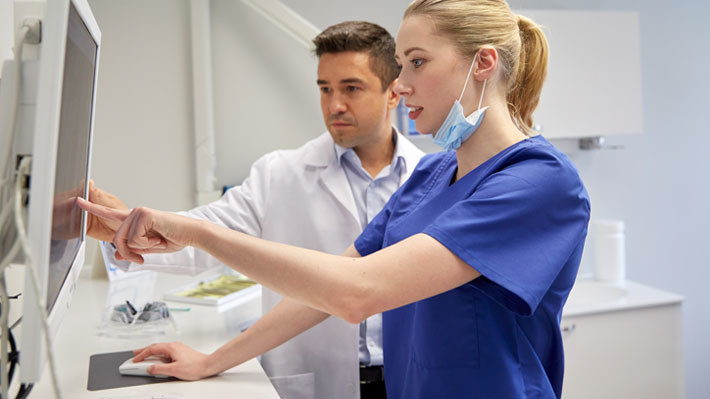
How Computers Are Revolutionizing Dental Implants
Given all the advances in dental technology over the last sixty -plus years, many people alive today would be surprised to learn how much different things were just a few short generations ago. For most of human history, the loss of a tooth was something for which there was no readily available solution. Tooth loss remains a common problem for mankind, but one that dental implants have now helped to make more manageable. These days, the loss of one or more teeth can be resolved through the implantation of replacements that can be all but indistinguishable from a patient’s natural teeth. And while computers now provide dental professionals with an enhanced ability to make those implants even more natural-looking, new developments promise even more exciting benefits in the future.
Since dental implants became more commonplace decades ago, implant surgeons have made it their mission to make each implant not only as aesthetically pleasing as possible, but functional as well. However, the process involved in planning for the implants was time-consuming and less precise than most dental surgeons would have preferred. Instead of merely relying on x-ray images and similar scans, today’s dental experts have access to computer technology that provide far superior imaging of the teeth, jawbone, and gums.
The advantages these new technologies offer simply cannot be overstated. For example:
- While implantation techniques were usually successful even without computer imaging, this new and more accurate mapping of the inside of the patient’s jawbone provides dentists with the ability to scan the teeth, gums, and jaw, and then construct the most aesthetic implants based on that three-dimensional imaging.
- Computer imaging enables implants to be even more accurately positioned within the mouth. That increased accuracy can help to prevent future complications, saving the patient from costly and time-consuming corrective procedures that might otherwise be necessary years later.
- The use of computer imaging can also help to increase the speed at which the entire implantation process occurs. Previous techniques often involved weeks or months of imaging and planning. Thanks to these revolutionary computer models, much of that work can be compressed into hours instead of weeks.
- These new techniques also enable today’s dental professional to minimize much of the potential for human error by providing the latest technological assistance throughout virtually the entire implantation process. From imaging to planning and much of the operation itself, computers can serve as a primary tool for ensuring optimal results that can last a lifetime.
Computer aided design and manufacturing capabilities offer modern dentistry new options for ensuring that patients receive the very best implant care in history. Even the most complicated dental cases can now be more easily managed, as these new technologies can help with every aspect of the process. That’s exciting news for patients in this area, since it can help to ensure that they always receive the best dental implants in midtown Manhattan. To find out more about how technology is changing modern dentistry in ways that dramatically improve patient care, call Ebenezer Dental today!

